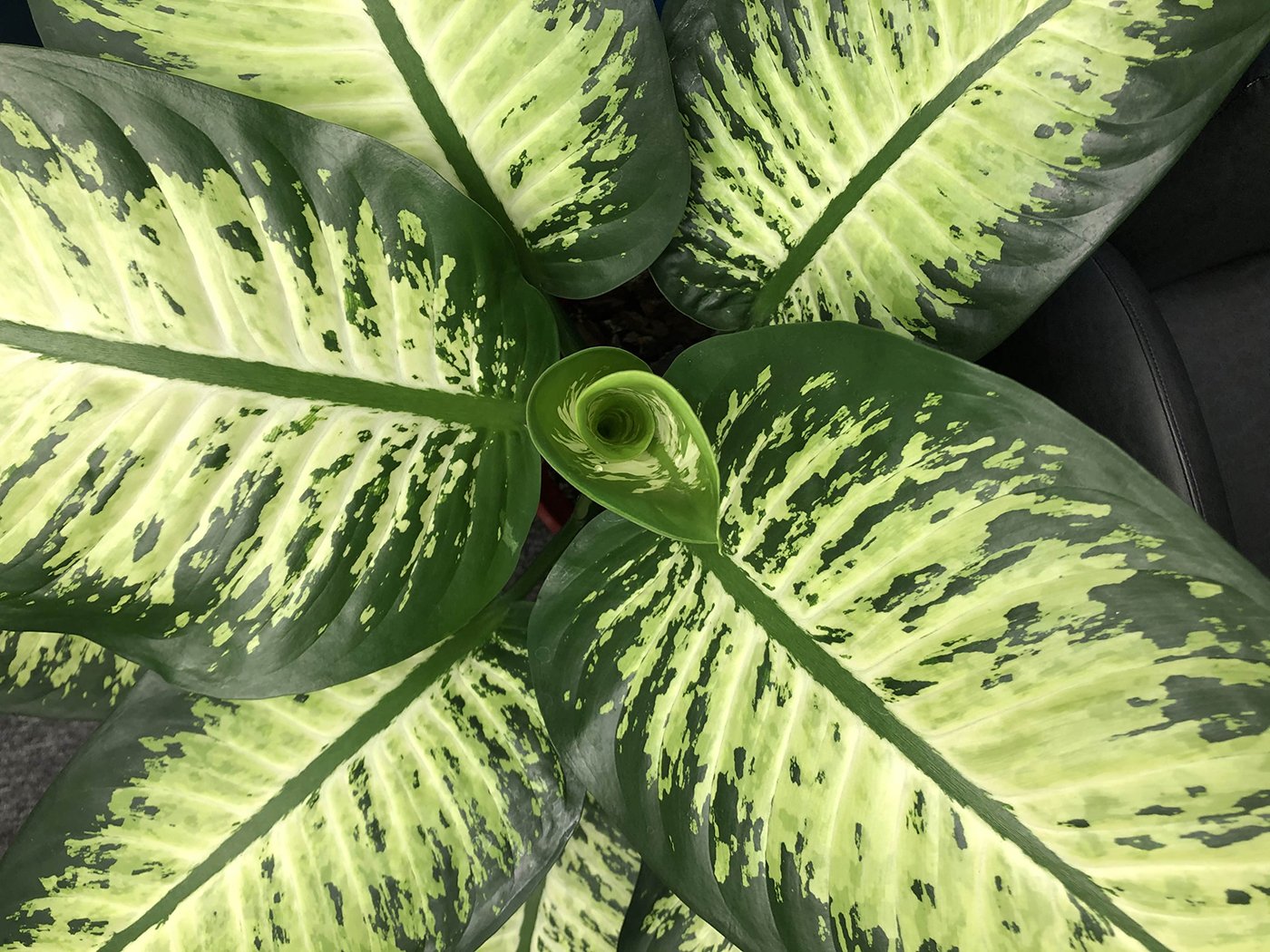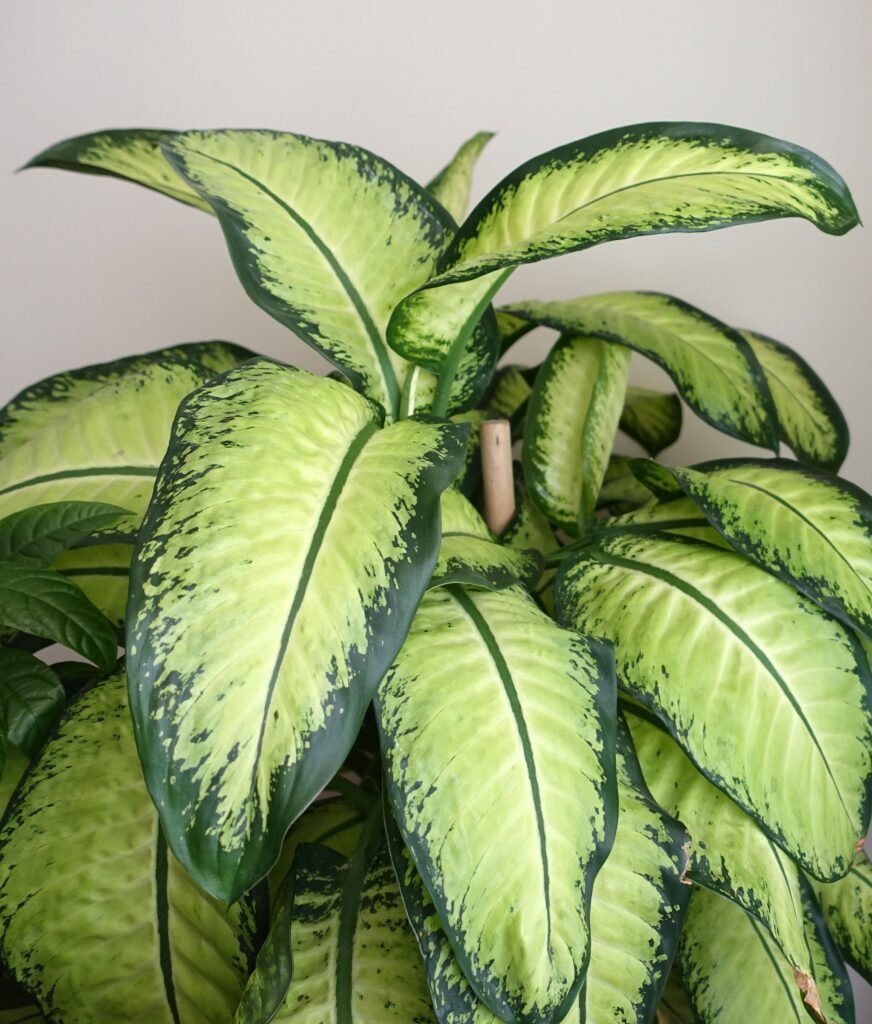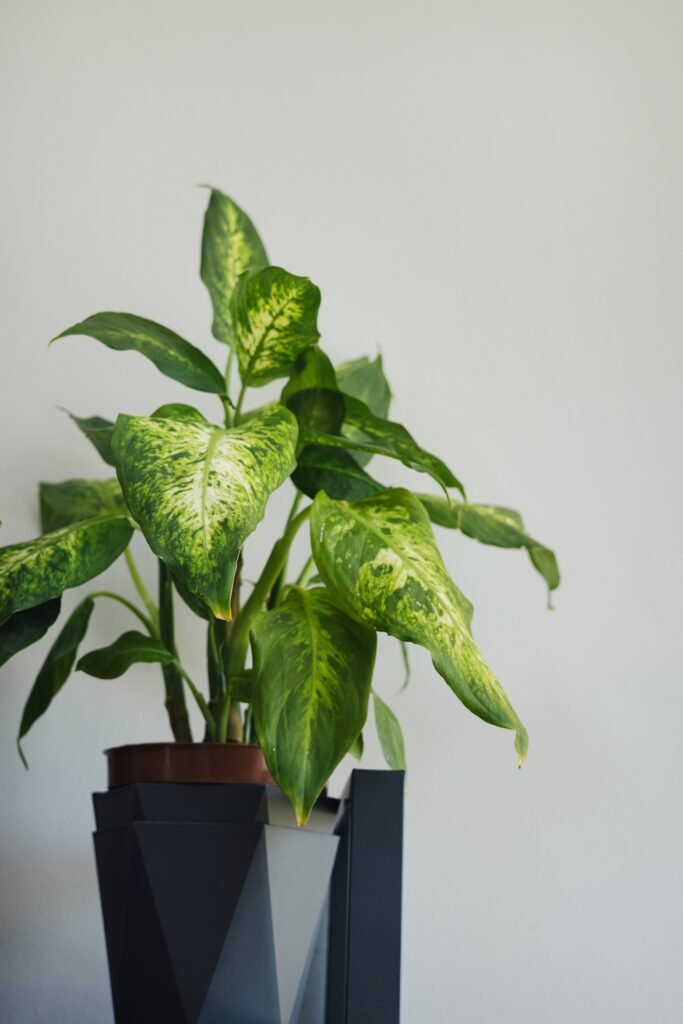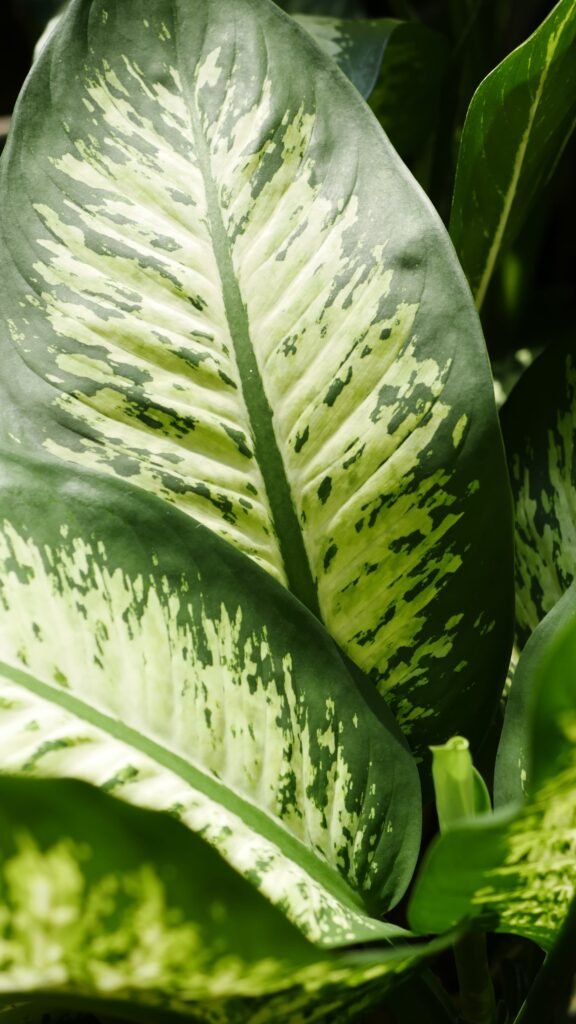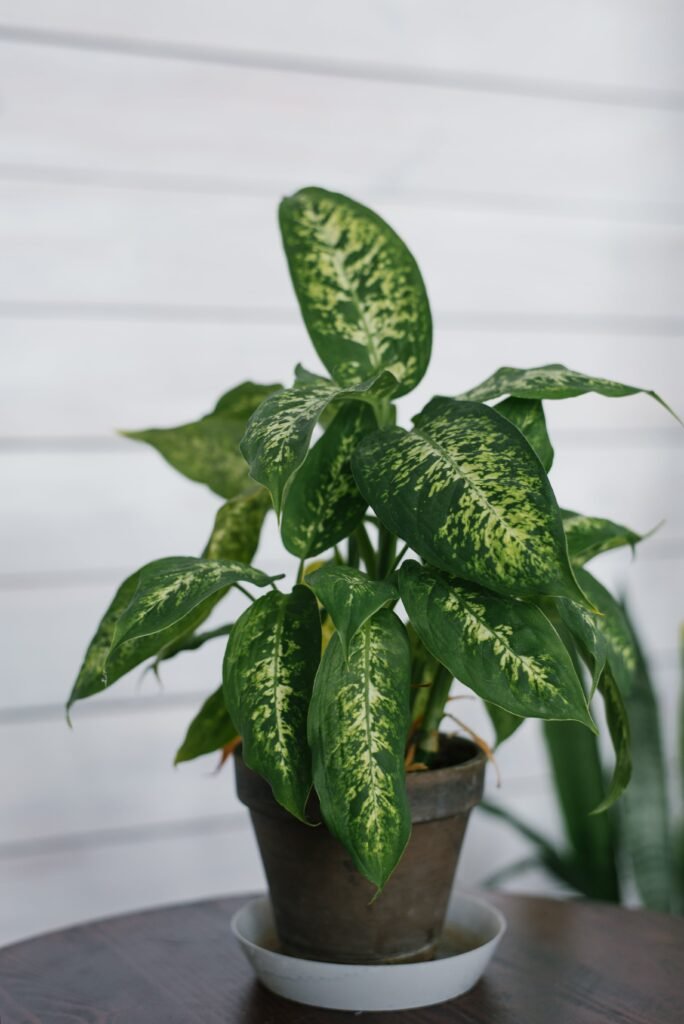DIEFFENBACHIA
- admin
- July 6, 2024
- Uncategorized
-
Post Views: 83
- 0
- lighting: Dieffenbachia prefers bright, indirect light. It can tolerate lower light conditions but will grow more slowly and may become leggy.
- watering: water the plant regularly and copiously. Irregular watering can turn the margins of the leaves into black. Ensure the pot has drainage holes to prevent water from sitting at the bottom, which can lead to root rot. In winter reduce watering. Water the plant as soon as the top soil dries out. Use soft, settled water of room temperature.
- fertilizing: from March to September Dieffenbachia Tropic Snow should be fed with a balanced, water-soluble fertilizer every 4-6 weeks during the growing season (spring and summer). In cold season it doesn’t need feeding.
- humidity: the plant thrives in moderate to high humidity. Aim for a humidity level of around 60%. If the air is dry, especially in winter, increase humidity by using a humidifier, placing a tray of water with pebbles near the plant, or misting the leaves regularly.
- temperature: Dieffenbachia is a heat-loving plant, so the temperature should be not less than 61°F. Maintain a temperature range of 65-75°F during the day and slightly cooler at night. It cannot stand sudden change in temperature and drafts.
- repotting: the plant can be repotted every 1-2 years or when it becomes root-bound. If the stem is already too long, it is possible to cut it, and new shoots will appear on the stem. Use a well-draining potting mix. A mix designed for houseplants or a combination of peat, pine bark, and perlite works well.

